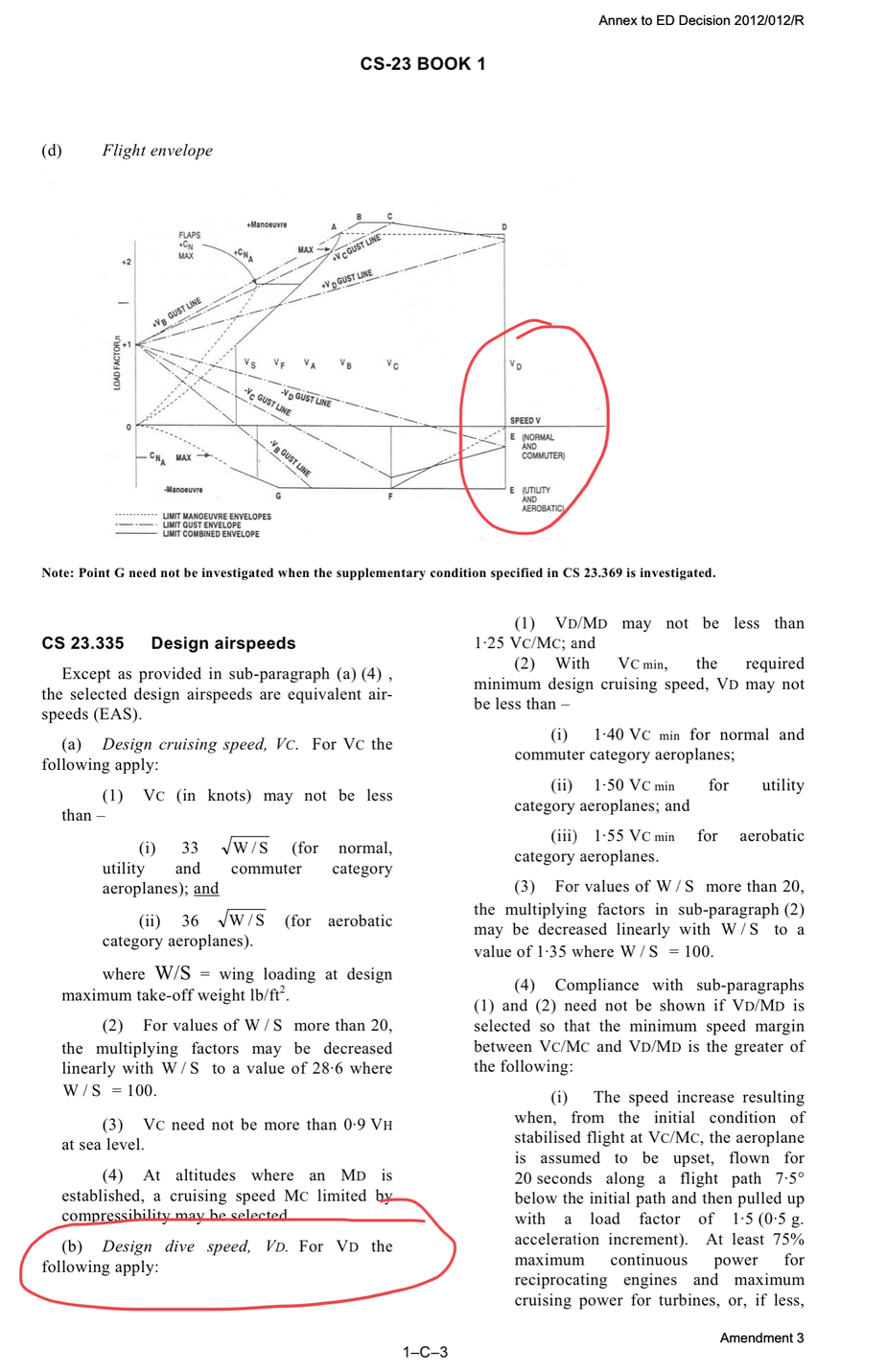Structurally, in calm air with absence of flutter aircraft should sustain VD on a dive, VNE is set at 0.9*VD, VD is indicated speed in KIAS and it’s associated with aerodynamic forces and all CS23/FAR23 aircraft should fly that without losing wings, the aerodynamic forces grow smooth quadratic in indicated KIAS
The real concern of going above 0.9*VD (10% VNE at sea level) is turbulent air or flutter harmonics, the only requirement under Part23 is to show no flutter exactly at VNE KTAS with “fluide & solid vibration” from aeroelasticity at MSL, you are on your own past VNE KTAS, flutter profile is not smooth in true KTAS, it’s a specific harmonic frequency where things resonate, you may well cross it with no issue up to VD, just don’t stay there for very long it goes mad !
Yes I agree with A_A Vno on turbulent does also indicate something about structural integrity but may not tell much about flutter you should expect above VNE KTAS with “fluide & solid vibration”, the VNO is related to “fluide & fluide vibration” and aerodynamic forces on indicated KIAS
TB20 should fly VD at 207KIAS with no issues at any altitude (after all they have done it during testing) but if flutter is observed at 200KTAS while you are flying 187KIAS you gotta cross that line very quickly before it start singing the opera !
Of course: it’s never exceed speed as far as the teaching goes…
I don’t understand most of the above.
What is “10% VNE at sea level”?
A certified aircraft is tested to fly at least 10% above it’s VNE, they do dive to check structural aerodynamic forces (this speed in KIAS is called VD), strict limitation on VNE on certified aircraft comes mostly from flutter (at specific KTAS value) or to allow more than 10% margin under VD (in KIAS)
VD: Design diving speed, the highest speed achieved in testing
https://en.wikipedia.org/wiki/V_speeds
I just found recently that PtF aircraft like LAA RVs on permits have VNE set at VD…
For TB20 in normal category, the VD tested in actual flight is 1.40*33*sqrt(WingLoad) that is north of 226kias with 24lbs/ft2 wing load, the VNE will be set less than 203kts but any idea why they went for 187kts?

@Peter I think this was already answered on EuroGA, re: ISA/TAS:
1. Vne/Vd limit in terms of dynamic pressure – indicated airspeed is looked at, and the wings should be still there after you go to Vd (Vd=Vne/.9)
2. Vne limit in terms of flutter etc – TAS is looked at. Quite possibly, it might work if you (as a design organisation) run some aeroelasticity tests (on the ground and then in flight) to extend it further if needed (and then you could request an STC, if you have approvals).
Conservative numbers? Who knows – the flutter may occur at much lower speeds and then disappear, as written above by @Ibra.
The biggest challenge here is the costs of testing – too many things depend on Vne & Vd, and all would have to be retested and recalculated…
I think the original question was – “Is the Vne marking on the ASI highly convervative at low levels” – was asked in the context of an aircraft that
If the above four are true, then the Vne at lower altitudes is conservative / unnecessarily low.
Hence some aircraft have altitude-specific Vne. The Baron 58P has
“Vne: 245 KIAS (reduce by 5kt per 1,000ft above 16,000)” and
“Vno: 196 KIAS (reduce by 4kt per 1,000ft above 16,000)”
I don’t know if that is possible for SEPs, though.
Cobalt wrote:
I don’t know if that is possible for SEPs, though.
I have a mandatory sticker in my Comanche (single) Cockpit stating: “reduce V_ne 6 mph per 1000ft above 16,000”
So, yes it is.
However this got never revised with the lowered V_ne. Initially the Comanche had 197 KIAS V_ne and I would be interested to know whether the reduction is still applicable in the same amount with the reduced V_ne of 166 KIAS. Anyway, it’s only really important for descents, and you get quickly below FL160.
Interesting thoughts, indeed. As V_ne has been lowered on the Comanche due to flutter at high TAS, this would mean in turn that at low altitudes it’s not a “true” limiting factor.
On 31/12 I dived our 1967 Bolkow 208C Junior to 153kts VNE and recorded the rpm at VNE, as required by the LAA Permit annual. The altitude at VNE was probably about 1,000’ – I don’t remember.
Last year I was phoned because I’d used the wrong speed – 2 knots below the correct figure – with the 1960/64 Jodel DR1050, rebuilt from 2 wrecks in the 70s.
That is what I understood to be the procedure for LAA permit aircrafts, I was puzzled at first that they set VNE = VD as in max speed dive 
Maybe the assumption is PtF don’t fly at 24,000ft, you wanna show how it’s done @Maoraigh ? 
Vne marking on the ASI highly conservative at low levels
Yes indeed. To protect you guys (gals if any… ) at higher levels. And a pretty good reason that on some „high performance“ aircraft, such as RVs (no, not biased at all  ), Vne is TAS, and not IAS…
), Vne is TAS, and not IAS…
Maoraigh wrote:
Last year I was phoned because I’d used the wrong speed – 2 knots below the correct figure
They reduced the Vne for Austers when they went on permit (and I’ve not seen an explanation as to why) to 145 mph (it was 160 IIRC). To be honest getting an Auster to do 160 is a real struggle.